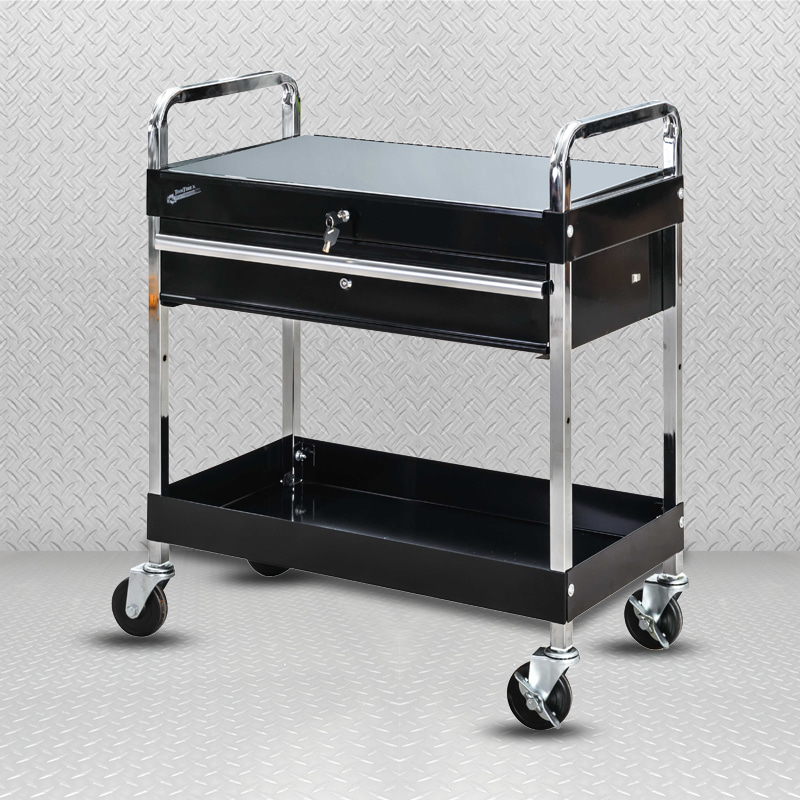The material properties of a metal tool cart significantly influence its ability to absorb and dissipate shock and vibration. Here’s how different material characteristics play a role:
Elastic Modulus (Young's Modulus):
Materials with a higher elastic modulus (such as steel) tend to be stiffer and less deformable under stress. This stiffness helps in transmitting and distributing shock and vibration through the structure, reducing localized deformation.
Strength and Toughness:
High strength alloys (like tool steels or certain aluminum alloys) can resist permanent deformation or fracture when subjected to impact forces, thereby maintaining structural integrity.
Toughness, which reflects a material’s ability to absorb energy before fracturing, is crucial in preventing sudden failure due to impact loading.
Damping Capacity:
Some materials, like certain aluminum alloys or polymers used in composite structures, possess intrinsic damping properties. This allows them to absorb vibrational energy by converting it into heat, thereby reducing the magnitude of vibrations transmitted to tools and equipment.
Density:
Materials with higher density (such as steel) typically have better mass to absorb and dissipate vibrations compared to lighter materials like aluminum. This property can help in stabilizing the cart and reducing oscillations.

Surface Coatings and Treatments:
Coatings or surface treatments (like rubber linings, elastomers, or vibration-damping pads) applied to metal tool carts can further enhance their ability to absorb and dissipate vibrations. These materials can absorb vibrational energy and reduce resonance frequencies, thereby minimizing the impact on stored tools and equipment.
Design Considerations:
The overall design of the cart, including its geometry, reinforcements, and structural connections, also plays a critical role in enhancing shock absorption and vibration damping. Rigorous design analysis ensures that stress concentrations are minimized and that forces are distributed evenly throughout the cart’s structure.
By carefully selecting materials with appropriate properties and incorporating effective design strategies, manufacturers can optimize metal tool carts to withstand and mitigate the effects of shock and vibration, ensuring the safety and longevity of stored tools and equipment.

 ENG
ENG  English
English Deutsch
Deutsch











 +86 (0)512-5297 3238
+86 (0)512-5297 3238 +86 (0)512-5297 3239
+86 (0)512-5297 3239 info@chinagoldenline.com
info@chinagoldenline.com  No.58, Yangguang Avenue, Yushan High-tech Industry Zone, Changshu City, Jiangsu, China.
No.58, Yangguang Avenue, Yushan High-tech Industry Zone, Changshu City, Jiangsu, China.

